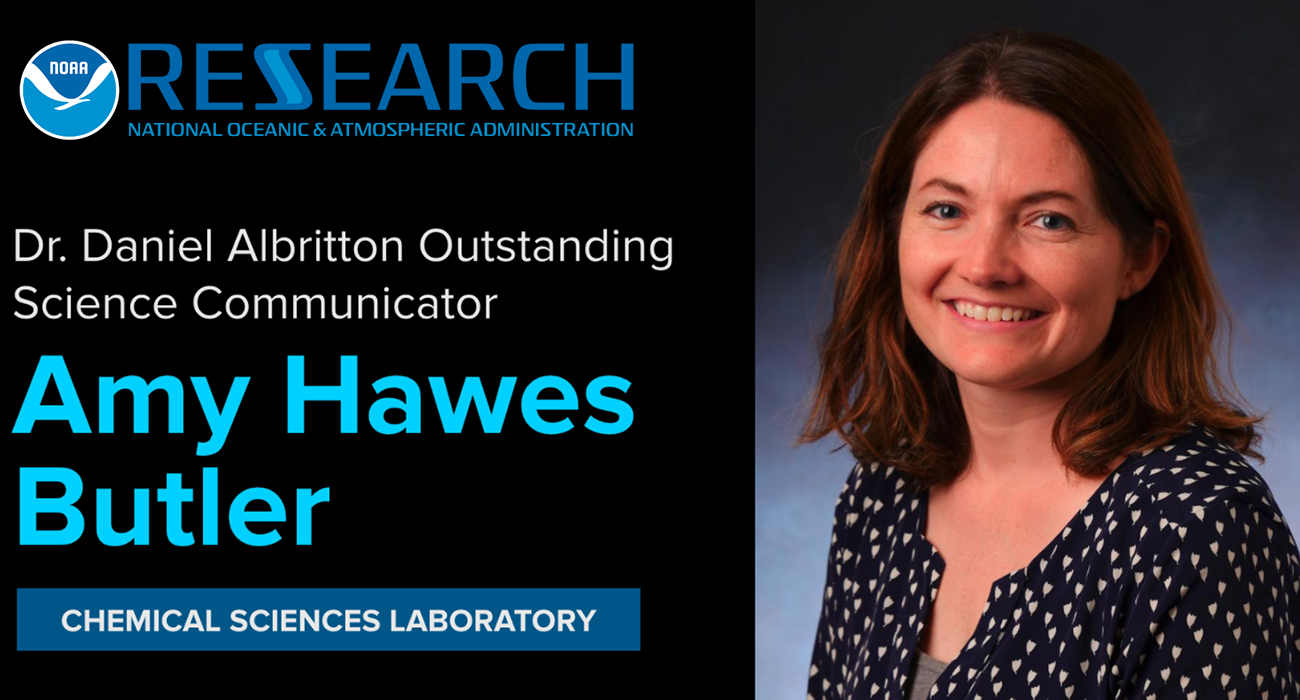A .gov website belongs to an official government organization in the United States.
A lock () or https:// means you've safely connected to the .gov website. Share sensitive information only on official, secure websites.
2 December 2021

Amy Butler receives a 2021 Dr. Daniel L. Albritton Outstanding Science Communicator Award "for outstanding communication of NOAA research regarding the impact of variations in the stratospheric polar vortex on weather at the Earth's surface."
Dr. Amy H. Butler is an expert on the stratospheric polar vortex and its connections to surface weather and extremes. She recently developed the Sudden Stratospheric Warming Compendium data set that documents the stratospheric, tropospheric, and surface climate impacts of sudden stratospheric warmings. Her research has investigated the role of the stratosphere in sub-seasonal to seasonal prediction, and the importance of the stratospheric pathway of the El Niño-Southern Oscillation (ENSO) teleconnection. Her research has also helped to inform whether and how the stratosphere will change in response to climate change.
Her insightful advances explaining how variations in the stratosphere eventually cause variations in weather at the surface has made a significant impact on atmospheric research, shaping the understanding of the atmospheric circulation response to global warming and the role of the stratosphere in surface weather and climate.
In the past few years, wintertime outbreaks of polar air have resulted in extreme weather in the U.S. and Europe. There has been a great demand from the popular press for explanations as to the causes of these events. The polar vortex has now become a household term and Dr. Butler is one of the go-to experts the media contacts when they want to describe how the stratosphere can affect wintertime weather. She helped NOAA Climate.gov develop new schematics and blog articles about the polar vortex and the influence of stratosphere-troposphere coupling on the surface.
Although early in her career, Dr. Butler has served as a mentor to post-doctoral researchers, summer undergraduate students, and high school students. She contributed to flight planning for the NASA Atmospheric Tomography Mission (ATom) and she has given multiple presentations on climate related issues at local high schools. She reaches out to the general public on social media, highlighting NOAA publications, explaining atmospheric dynamics and chemistry-climate interactions.
Her explanations are simple, accurate, and interesting, and her communications help build NOAA's brand as an authoritative source of climate information.